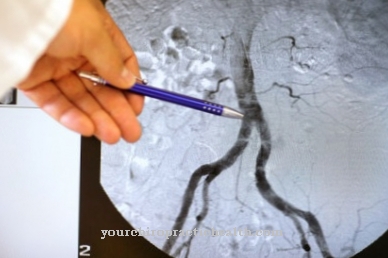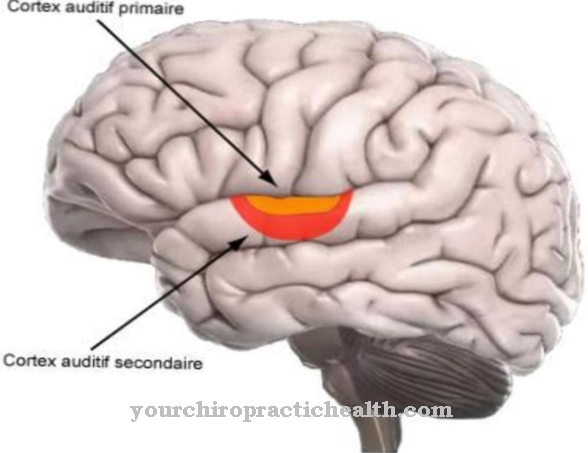The Anesthesiology refers to the theory of anesthesia brought about by anesthetics for the purpose of medical, mostly surgical interventions, for pain treatment and in intensive medicine. In order to make invasive treatments more comfortable for the patient and also to make the interventions easier for the doctor, partial or general anesthesia are performed by the anesthetist.
What is anesthesiology?

The specialist in anesthesiology is responsible for the choice of the right anesthetic, the correct dosage, the pre- and post-operative care of the patient and during the procedure also for the monitoring of the vital signs and any intervention if this should prove necessary.
Since certain previous illnesses or dispositions mean a higher risk with general anesthesia, it is important for the anesthetist to know the patient's history exactly. Anesthesiology is a specialty of medicine that, due to its wide range of applications, often comes into contact with other areas. Anesthesiologists may need to work in all cases in which the patient is in pain, surgical intervention is required or the patient is being cared for in intensive care. Anesthesia can take place locally, regionally or generally. With local anesthesia, a clearly demarcated area is anesthetized in order, for example, to carry out surgical interventions, to clean a wound and other things.
With regional anesthesia, one area of the body is anesthetized. Both types of anesthesia have no effect on consciousness. The patient is awake during the treatment, but does not feel any pain in the anesthetized area. In addition to physical relief, this also has the advantage that the patient does not flinch away or cramp up when the pain is caused by the procedure, which could result in injuries. General anesthesia also affects the patient's consciousness. In addition, insensitivity to pain and immobility are also brought about.
Treatments & therapies
It is difficult to assign anesthesiology to specific medical specialties or diseases. A large number of possible medical sub-areas can show cases in which anesthesia is necessary. However, this is particularly the case in surgery, emergency medicine, intensive care medicine and pain therapy.
Surgical interventions on their part can have their origins in all possible clinical pictures; Tumor treatments, plastic surgery, maxillofacial surgery, appendix and tonsil removals, gynecological interventions, organ transplants, and gastric ulcer removal are just a few of the possible treatments that may require general or local anesthesia. The treatment of wounds and injuries caused by accidents often requires anesthesia.
The task of the anesthetist seldom makes diagnoses or suggests treatment. For example, the decision as to whether a patient's suffering should be reduced or eliminated through an operation, and not through drug or other treatment, rests with the respective treating specialist.
Particularly with general anesthesia, accurate knowledge of the patient's medical history on the part of the anesthetist is required for correct, as low-risk anesthesia as possible. In particular, heart diseases, drug intolerance and the general condition of the patient are taken into account by the anesthetist.
Pain treatment is another major area of application for anesthetists. They often monitor accident victims or patients receiving intensive medical care and their vital functions, even if no general anesthesia was used.If their condition worsens or if they develop pain, the anesthetist can resort to anesthetic or narcotic medication and provide relief for the patient. Artificial ventilation, for which the patient is sedated, may be necessary, particularly in intensive care medicine.
You can find your medication here
➔ Medicines for painDiagnosis & examination methods
With local anesthesia, a drug is usually injected specifically into the area to be anesthetized in order to switch off the sensation of pain there. Other options include applying numbing ointments or sprays. This is useful for small interventions, such as the care of smaller wounds. Sewing them can also be facilitated by anesthesia beforehand.
With regional anesthesia, such as epidural anesthesia (PDA for short), the nerve plexuses that are responsible for a specific area of the body are anesthetized. They are usually more effective than "local anesthesia" methods. However, the medical terminology is not standardized. With a PDA as an example of regional anesthesia, the body is anesthetized from a certain point in the spine downwards. The mobility of this area is also no longer given during the period of effect. This type of anesthesia is often used for childbirth because the mother does not need to be unconscious, but a very limited, local anesthetic would not be fully effective in relieving the pain.
Investigations such as an ultrasound of the heart or a lung function test can be carried out to decide whether general anesthesia is feasible for the patient or whether it poses too high a risk. During general anesthesia, the patient's vital functions are continuously and thoroughly monitored and displayed on screens. The body is so extensively sedated that even breathing on its own fails. Therefore, patients under general anesthesia are artificially ventilated by means of so-called intubation, which takes over the function of the lungs.
Pulse, heart activity and blood pressure are monitored; in the event of threatening abnormalities, the anesthetist is also alerted by the system by acoustic warning tones and can quickly take countermeasures. For example, a patient's drug intolerance to one of the anesthetics used may be unknown until the time of the operation. Even after the operation, it remains with the patient for follow-up care or is available for them, since postoperatively minor and rarely life-threatening complications can often occur.
















.jpg)







.jpg)



